Treatments

Implants
Dental implants are replacement tooth roots. Implants provide a strong foundation for fixed (permanent) or removable replacement teeth that are made to match your natural teeth. The modern dental implant is a surgical device, most commonly used to replace one or more missing Teeth by fusing to the bone and acting as an artificial Tooth Root. The term, dental implant, technically refers only to that portion of the structure that is in the bone.
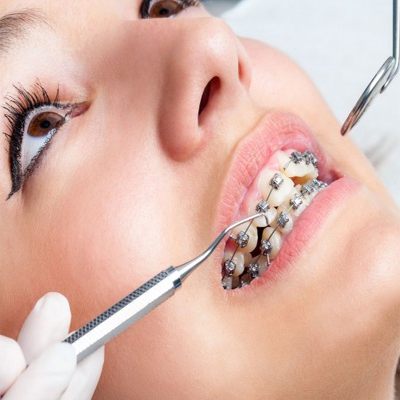
Orthodontics
Orthodontics and Dentofacial Orthopedics is the first specialty of dentistry that is concerned with the study and treatment of Malocclusions (improper bites), which may be a result of Tooth irregularity, disproportionate Jaw relationships, or both. Orthodontic treatment can focus on dental displacement only, or can deal with the control and modification of facial growth. In the latter case it is better defined as "dent facialorthopedics".
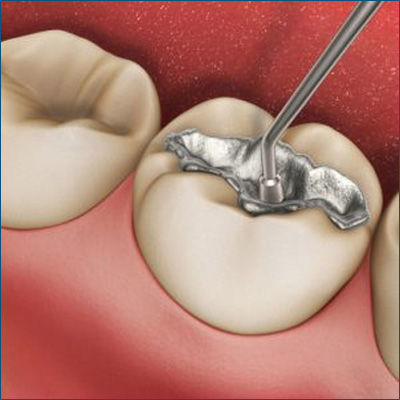
Fillings
Dental Filling is a Dental restorative material used to restore the function, integrity and morphology of missing tooth structure. The structural loss typically results from caries or external trauma. Dental restoration also refers to the replacement of missing tooth structure that is supported by dental implants. Filling basically consist of restoring Calious& damaged tooth via different Denal Materials & modalities.
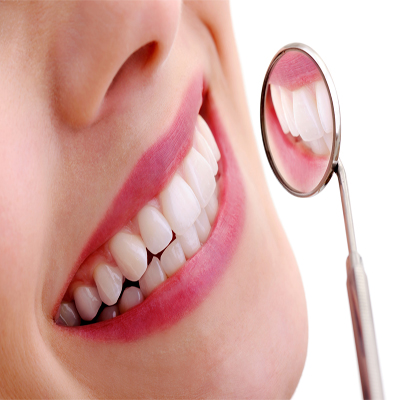
Scaling
Oral health is an important part of our general health. Whatever your age, you must have healthy teeth. Regular care can help you keep your teeth healthy for lifetime. Scaling is a totally harmless process which helps in keeping your Gums healthy & Firm. Unwanted material like Plaque, calculas& stains on the surface of teeth, which leads to cause infection and loosening of the gums & ultimately leading to pyorrhea and tooth loss at a very early stage. Scaling must be done by a skilled & Qualified professional.

Implant Supported Bridge
A fixed dental restoration used to replace a missing tooth by joining an artificial tooth permanently to adjacent teeth or dental implants is known as Bridge. The fabrication of the dental bridge is done as per the individual requirement of the patient, taking into consideration the location of the teeth & material from which the bridge is to be prepared. The abutment teeth are reduced according to the pattern of the bridge to accommodate the material to restore the size and shape of the original teeth in the correct alignment and contact with the opposing teeth.
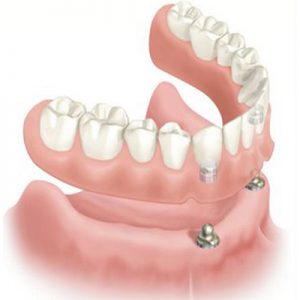
Dentures
Dentures, also known as false teeth, are prosthetic devices constructed to replace missing teeth; they are supported by the surrounding soft and hard tissues of the oral cavity. Conventional dentures are removable. However, there are many different denture designs, some which rely on bonding or clasping onto teeth or dental implants. There are two main categories of dentures, the distinction being whether they are used to replace missing teeth on the mandibular arch or on the maxillary arch.
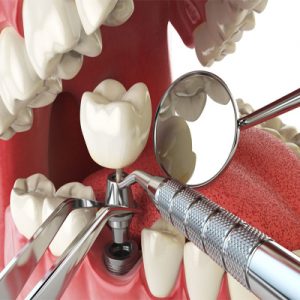
Prosthetic
In Prosthetic we deliver upper & lower complete Denture Prosthesis to the patients. Partial Dentures are also provided to patients according to the need of Individual Patients.
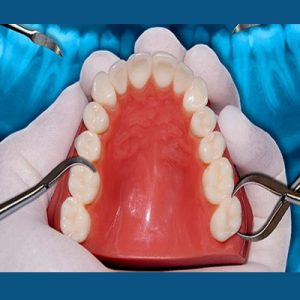
Oral Surgery
In Oral Surgery we deal with total extraction of indicated Teeth, Surgical removal of Impacted Teeth, Removal of lesions such as Cyst, Tumor, Treating pre Malignancy & Malignant lesions, orofacial Injuries & Fractures due to accidents are also effectively treated.

Cosmetic Dentistry
Cosmetic dentistry is generally used to refer to any dental work that improves the appearance (though not necessarily the function) of a person's teeth, gums and/or bite. Discolored, Malaligned, Malframed

Splinting
Splinting process allows a weak or movable teeth to survive for a longer time with the help & Support of its strong neighbors. With the help of splinting the patient feels more comfortable during chewing of food. Connecting multiple teeth with splinting also provides increased support for the procedures like partial denture. support when the teeth are used as abutments for a precision attached Several methods, both extracoronal and intracoronal, are available to splint teeth together.

Extraction
Dental extraction is the removal of a tooth from the mouth. Extractions are performed for a wide variety of reasons, including tooth decay that has destroyed enough tooth structure to render the tooth non-restorable. Extractions of impacted or problematic wisdom teeth are routinely performed, as are extractions of some permanent teeth to make space for orthodontic treatment.
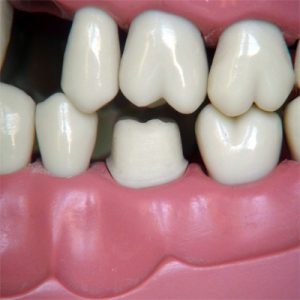
Crown Preparation
A crown is a type of dental restoration which completely caps or encircles a tooth or dental implant. Crowns are often needed when a large cavity threatens the ongoing health of a tooth. They are typically bonded to the tooth using a dental cement. Crowns can be made from many materials, which are usually fabricated using indirect methods. Crowns are often used to improve the strength or appearance of teeth. While inarguably beneficial to dental health, the procedure & materials can be expensive. The most common method of crowning a tooth involves using a dental impression of a prepared tooth by a dentist to fabricate the crown outside of the mouth. The crown can then be inserted at a subsequent dental appointment. Using this indirect method of tooth restoration allows use of strong restorative materials requiring time consuming fabrication methods requiring intense heat, such as casting metal or firing porcelainwhich would not be possible to complete inside the mouth. Because of the expansion properties, the relatively similar material costs, and the aesthetic benefits, many patients choose to have their crown fabricated with gold.

Root Canal
Root canal therapy is a sequence of treatment for the pulp of a tooth which results in the elimination of infection and protection of the decontaminated tooth from future microbial invasion. This set of procedures is commonly referred to as a “root canal”. Root canals and their associated pulp chamber are the physical hollows within a tooth that are naturally inhabited by nerve tissue, blood vessels and other cellular entities. Endodontic therapy involves the removal of these structures, the subsequent shaping, cleaning, and decontamination of the hollows with tiny files and irrigating solutions, and the obturation (filling) of the decontaminated canals with an inert filling such as guttapercha and typically a eugenol-based cement. Epoxy resin, which may or may not contain BisphenolA is employed to bind guttapercha in some root canal procedures.

